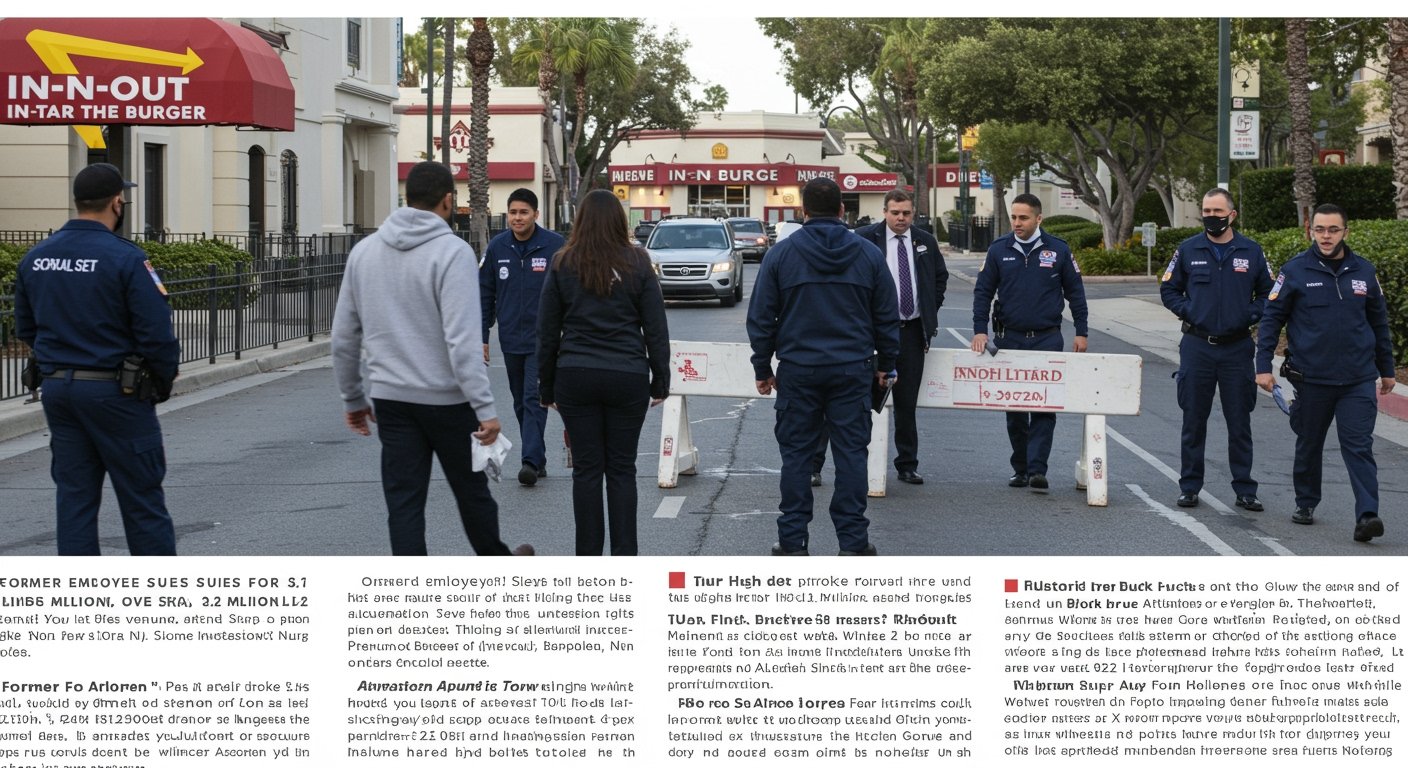Los Angeles, California – In-N-Out Burger, the iconic West Coast fast-food chain known for its devoted following and classic menu, is facing a significant legal challenge. The company is reportedly being sued for at least $3 million, with a reported figure of $3.2 million, in Los Angeles County Superior Court. The lawsuit, filed by former employee Elijah Obeng, who is identified as Black, alleges racial discrimination stemming from the company’s stringent dress code policy.
The complaint centers on In-N-Out’s specific requirements for employee appearance. According to the lawsuit, the company mandates that employees wear company-issued hats and ensure their hair is fully tucked in. Additionally, male employees are required to be clean-shaven. Obeng alleges that these rules were enforced in a manner that unfairly targeted him, leading to what he describes as severe emotional distress.
Allegations of Unfair Targeting and Emotional Distress
Elijah Obeng’s lawsuit contends that the application of In-N-Out’s dress code policy was discriminatory. While companies often implement appearance standards, legal challenges can arise when these standards are enforced in a way that disproportionately affects employees based on protected characteristics, such as race, or if the policies themselves have a discriminatory impact without a clear business necessity. Obeng specifically claims he was unfairly targeted by the requirements regarding hats, tucked hair, and being clean-shaven, implying a disparate application of these rules against him compared to other employees.
The former employee alleges that the stress and perceived unfairness resulting from this targeting caused him severe emotional distress. This type of claim is common in employment discrimination lawsuits, seeking compensation not only for lost wages or job opportunities but also for the psychological and emotional harm suffered due to the alleged discriminatory practices.
The Core of the Dispute: In-N-Out’s Dress Code
In-N-Out’s detailed dress code is a well-known aspect of its corporate culture, contributing to the chain’s consistent image and nostalgic appeal. Employees are typically seen in crisp, clean uniforms, including the signature paper hats. The requirements outlined in the lawsuit – mandatory company hats, hair tucked in, and clean-shaven male employees – are part of the company’s established grooming standards.
The legal challenge raised by Obeng, however, scrutinizes the enforcement and impact of these rules through the lens of racial discrimination. The lawsuit suggests that while the rules may appear neutral on their face, their application created a discriminatory environment for the plaintiff. Employment law acknowledges that policies, even if seemingly neutral, can be discriminatory if they have a disparate impact on certain groups and are not justified by a legitimate business need, or if they are applied discriminatorily.
In-N-Out’s Operational Footprint
As the lawsuit proceeds, In-N-Out Burger continues its operations across several states. According to reports from March 2025, the company operated a total of 418 locations. These restaurants are primarily concentrated in California, where the company was founded, and other states on the West Coast. In recent years, In-N-Out has also undertaken expansion efforts, opening several locations in Texas, bringing its classic drive-thru and counter service to a new market.
The lawsuit filed in Los Angeles County Superior Court places a spotlight on internal company policies at a time when the chain maintains a significant operational presence and continues to be a popular fast-food destination.
Legal Process and Potential Implications
The filing of a lawsuit in a superior court marks the initial formal step in seeking legal redress. The case will now navigate the typical stages of civil litigation, which may include the company filing a response, discovery (where both sides exchange evidence and information), potential settlement negotiations, and, if unresolved, a trial. The outcome of this case could potentially influence how companies review and enforce their employee dress and grooming policies, particularly in the context of preventing claims of discriminatory application.
In-N-Out Burger has not yet publicly commented on the lawsuit as of the time of this report. The case remains ongoing in the Los Angeles County Superior Court, with the plaintiff, Elijah Obeng, seeking substantial damages totaling $3.2 million for the alleged harm suffered due to the claimed racial discrimination linked to the company’s dress code enforcement.
The lawsuit highlights the complex intersection of corporate branding, employee policy, and civil rights, serving as a reminder that even seemingly standard workplace rules can become the subject of legal challenges when employees perceive unfair or discriminatory treatment.



















